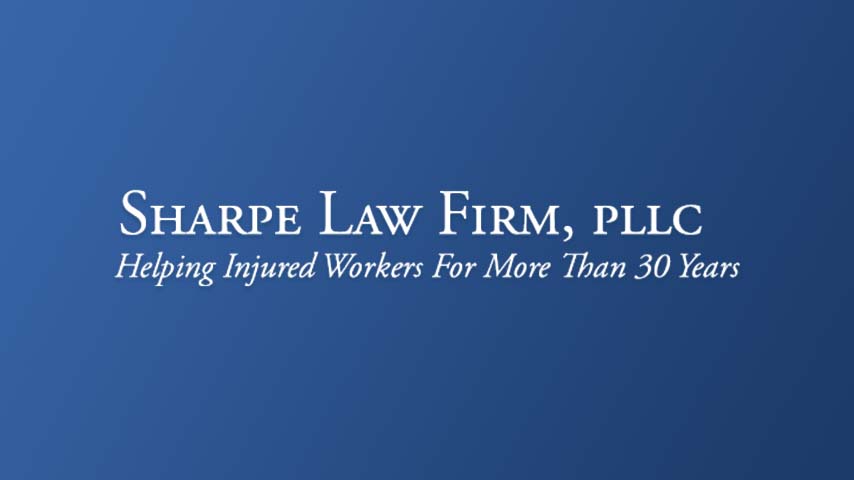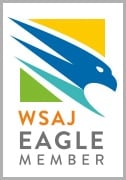It’s too easy to be injured on a construction site. Exposed rebar, moving vehicles, unmarked hazards, burns, electrical shocks, cave ins, falling material, trench collapses, chemical exposure, lack of safety meetings, crane injuries, falls, careless subs and other unsafe conditions all cause injuries. Construction site injuries can create both L&I claims and Third Party Claims.
Construction site L&I claims are for the most part like any other L&I claim. Information about how to handle an L&I claim is all over this website. L&I Benefit Information and L&I Claims – A Beginners Guide.
The unusual thing about construction site injuries is that they often create two claims.
Two Claims in One, L&I Claim and Third Party Claim.
A worker hurt on any job in Washington State has an L&I workers compensation claim. A construction worker may also have a third party claim.
L&I Construction Claims
L&I is no fault workers’ compensation coverage in Washington State. After a job injury the worker and their doctor file a Report of Accident with the Department of Labor and Industries. This begins the L&I claim for medical and money benefits. There is no requirement or need to prove that someone was at fault with an L&I claim. L&I is no fault.
Third Party Claims in Washington State
L&I third party claims are negligence (fault) based. Fault is important. The injured worker must prove the negligence of the third party.
Construction Site Injuries and Accidents Often Involve Both L&I Claims and Third Party Claims.
A third party claim is a personal injury claim together with an L&I claim, arising out of the same set of facts. When you have both an L&I claim and a personal injury claim, the personal injury claim is called a third party claim.
You have a third party claim if you are injured while on the job, by someone who is not your employer or a co-employee.
Third Party Claim Example #1
An employee of a subcontractor injured on the job by the general contractor or a different subcontractor has a third party claim. That employee has an L&I claim for the on the job injury and a third party personal injury claim because someone who is not his employer or co-employee injured him.
Third Party Claim Example #2
A truck driver on the job is injured on the highway in an accident involving another vehicle. This truck driver may have two claims. He has a no fault L&I claim for having been injured on the job. He also may have a third party fault based personal injury claim against that other driver.
Can I Have Both an L&I and a Third Party Claim? Can I Sue the Third Party?
Yes, you can have an L&I claim and also a third party claim. You can have them both at the same time. The L&I claim has a 1 year Statute of Limitations. The third party claim has a 3 year Statute of Limitations.
Why Would I Want to Sue a Third Party if I Have an L&I Claim?
You pursue a third party because third party claims pay monies not available from L&I. You can recover for all your lost wages, injuries, pain and suffering, and future loss of earning capacity.
L&I claims pay less than what you have lost. Time loss money is limited. Permanent Partial Disability settlements are small. L&I often does not pay enough. Third party claims together with an L&I claim pay more.
Can I Recover Money Under Both Claims – L&I and Third Party?
Yes, you can recover under both systems subject to the subrogation rights of L&I. How you proceed with a third party claim while being wary of L&I’s subrogation is important. Get details at Third Party Claims.
Statute of Limitations
There are very important time deadlines for both third party claims and L&I claims. Don’t miss your deadline.
What About Fault in L&I Third Party Claims? Learn the Rules.
A THIRD PARTY CLAIM REQUIRES FAULT (proof of negligence) to be successful.
- The general contractor has a common law duty to maintain a safe workplace, and a statutory duty to comply with WISHA. The general also has vicarious liability for the negligence of parties to whom it delegates, and for the negligence of parties over whom it exercises control.
- Sub contractors are responsible to ensure a safe work place regarding their scope of work and the zone of danger under their control. A breach of duty is evidence of negligence.
- The material suppliers are responsible for the movement and storage of the materials they bring on to the work site.
- The manufacturer of products is responsible for the foreseeable consequences of safe use of their product. These products can be defective or toxic and dangerous. They can be the subject of a successful third party lawsuit.
- Landowners should keep their property free of dangerous conditions. If their negligence injures you, consider a third party lawsuit.
To be successful with a third party construction site case you will need to prove fault. To prove fault you need evidence. Evidence can disappear quickly. It is important to take pictures, find and talk to witness, gather investigative reports, and encourage WISHA inspectors to visit the site. Get legal help if you need it
L&I Claims Are NO FAULT Claims – Employer and Employee Fault Do Not Matter.
Insurance Companies and Lawyers
Construction site accidents are vigorously defended by experienced insurance adjusters and their stable of aggressive defense lawyers. To get the insurance company to take you seriously you will want to have your own lawyer.
Can I Sue My Employer?
You can sue a third party, but you cannot sue your employer or coworker for a job injury. The L&I system replaces your ability to sue your employer for his negligence. It doesn’t matter that it’s your employer’s fault. An exception to this rule is intentional injures. If the employers’ conduct was so over the top that he intended the injury then the employer can also be sued. More information at Can I Sue My Employer?
Another semi-exception to this rule exists for Temporary Workers. For more information see Temporary Agency Employee and Third Party Rights.
What is a Third Party Election Form?
The third party election form starts the third party claim. This form is important. This is how you tell L&I what to do and where to go. Understand what you are doing before you complete this form. Don’t give up your right to a third party claim. Get details and a form here, Third Party Election Form.
WISHA
WISHA, an arm of the Department of Labor & Industries, regulates job site safety in the state of Washington. A WISHA inspector can help you prove fault.
- WAC 296-155-040 (1) Each employer shall furnish to each employee a place of employment free from recognized hazards…
- WAC 296-155-040 (2)….Every employer shall do everything reasonably necessary to protect the life and safety of its employees.
What To Do If You Have a Serious Construction Site Injury?
- Get medical care
- Talk to a lawyer who knows both L&I Law and Third Party Law
- File an L&I claim
- File a third party claim
Construction Injury Lawyer in Washington State
Construction site attorneys, crane accident lawyers, road construction lawyers all have a working knowledge of construction law and medical trauma. It’s their job to prove that your injuries are the result of the defendants negligence.
Crane Accident Lawyer
Crane accident law is unique. A good crane accident lawyer can help discover and prove improper rigging, overload, inadequate assembly, operator error, boom collapse, lack of safety precautions, and why other circumstances showing the accident happened.
Electrocutions and striking a worker or the public should not happen. When serious injuries occur, negligence and a violation of WISHA crane rules need to be proven. A crane accident attorney can help you do this. See the WISHA Rules for details. Contact the Sharpe Law Firm for results and legal help.
Road Construction Accidents
Road construction work puts the project, the workers, and the driving public in close proximity. Serious accidents happen. Common causes of road construction accidents include negligent traffic control, confusing signage, poor lane marking, rough surface, distracted driving, bad lighting, and roadway hazards. Serious injuries occur. Get advice, help, and a free consultation. Contact Us.
Serious Accidents are Worth More with a Lawyer.
- Not because lawyers are cheap, but rather because insurance companies are cheap and don’t want to pay you anything.
- Construction site accidents are vigorously defended by experienced insurance adjusters and their stable of aggressive defense lawyers. The get the insurance company to take you seriously you may wish to have your own aggressive lawyer.
- Most of a good recovery is worth more than no recovery at all
- Contingent fees make getting a good lawyer possible.
FAQ’S
Who Conducts Accident Investigations on Construction Sites?
Accident investigations are conducted by WISHA, OSHA, L&I, employers, worker’s attorneys, private investigators, and insurance companies.
How to Report an Accident at a Construction Site?
L&I claims
- Injured workers will want to file their accident report with their first visit to a doctor after their injury. Filing an L&I claim is important and necessary. Filing an L&I Claim Injured workers must file a Report of Accident within one year. Statute of Limitations
- Employer requirements L&I has mandatory reporting requirements for injuries that involve a fatality, inpatient hospitalizations, amputations, and loss of eye injuries. Report to 1-800-423-7233 within 8 hours
Employer reporting requirements. Every employer has their own policy about reporting an accident. Best policy is to inform your supervisor of your injury the same day it happens, and follow company policy. That however does not mean you should see a doctor recommended by your employer.
Insurance company. They may be on the hook to make payments as a result of an accident. They will have their own reporting requirements. If it is your policy then read it.
What is Fall Protection?
Fall protection is safety equipment to prevent falls and serious injuries. Guardrail systems, safety net systems, and personal fall arrest systems are conventional fall protection.
Fall protection required with elevations 4 or 6 feet or more. Fall protection starts with a fall protection plan and safety meetings. Rules at WAC 296-880
Are Ladders Dangerous?
Ladders are as dangerous as alligators. Workers are seriously hurt every day be ladder falls. There are dozens of rules and regulation about ladder safety including maximum length, maximum load, ladder conditions and inspection, required training for users, and ladder design.
If you have been injured using a ladder, check out the WISHA Ladder Rules: WAC 296-876.
Are There Rules About Scaffold?
WISHA regulates scaffolds in Washington State WAC296-874. There are rules about design, assembly, ladders, walkways, inspection and a whole lot more. The safety rules and your facts are important in all scaffold cases.
What are the Machine Safety & Grinding Rules in Washington State?
WISHA rules require machines be secure, hazard free, operation safe, with emergency stop, and properly guarded. WAC 296-806
What are Core Safety Rules?
Core safety rules start with an accident protection plan, WAC 296-800-14005, require safety training and must be effective in practice WAC 296-800-14025, and supervision WAC 296-800-14020. All construction and manufacturing require the core safety rules be followed.
In addition there are rules about first aid WAC 296-800-150, Safety data sheets WAC 296-800-180, Safety bulletins WAC 296-800-19005, Lighting WAC 296-800-210, Personal protective equipment WAC 296-800-160, Housekeeping WAC 296-800-220, Personal hygiene WAC 296-800-230, Electricity WAC 296-800-280, Fire extinguishers WAC 296-800-300, Fire exits WAC 296-800-310, Accident reporting WAC 296-800-320 and Confidentiality WAC 296-800-340










